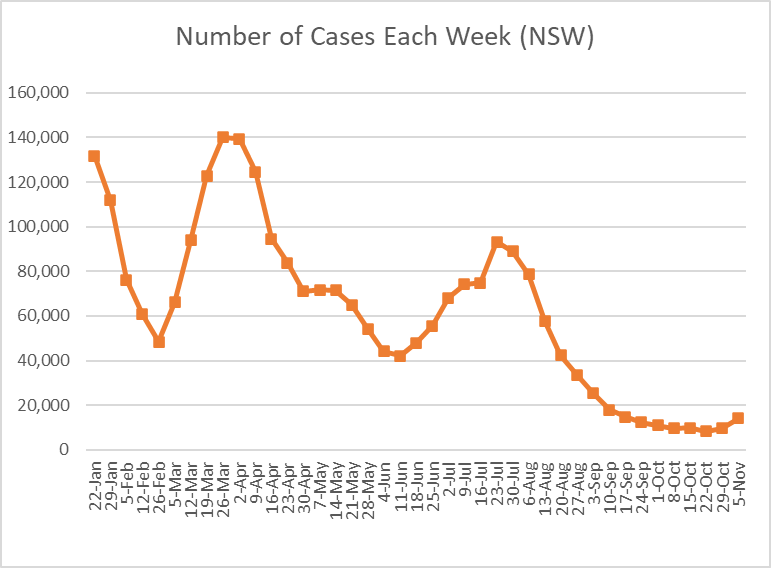
NSW Health have released their epi report for the week ending 12 November.
A thread/
#Covid19Aus #Covid19NSW
You can find the full report here...
health.nsw.gov.au/Infectious/cov…
A thread/
#Covid19Aus #Covid19NSW
You can find the full report here...
health.nsw.gov.au/Infectious/cov…
Cases are up 60% this week, back above 20,000 for the week.
While not shown here, RAT cases more than doubled (up from 3,600 to 8,000) while PCR cases increased from 10,500 to 14,600.
While not shown here, RAT cases more than doubled (up from 3,600 to 8,000) while PCR cases increased from 10,500 to 14,600.

By age band, adult age groups increased by 65%. Kids up by 50%. That gap between the 60+ age group and the rest is getting bigger. 

480 people admitted to hospital or ICU this week, and I expect another 90-ish not yet including in the data.
That's admissions up about 35% on last week.
That's admissions up about 35% on last week.

Latest variant picture, noting this goes up to 5 Nov so is almost 2 weeks old.
Reading numbers off the graph, it looks like:
- BA.5 still about 50% of cases
- our home grown BR.2 about 25%
- BA.2.75 about 10%
- BQ.1.1 about 8%.
ends/
Reading numbers off the graph, it looks like:
- BA.5 still about 50% of cases
- our home grown BR.2 about 25%
- BA.2.75 about 10%
- BQ.1.1 about 8%.
ends/

@Mike_Honey_ I have another variant question for you sorry. Is BR.2 shown here both BR.2 and BR.2.1? And why is BA.2.75 growing all of a sudden?
I am finding it very hard to keep track!
I am finding it very hard to keep track!
• • •
Missing some Tweet in this thread? You can try to
force a refresh













